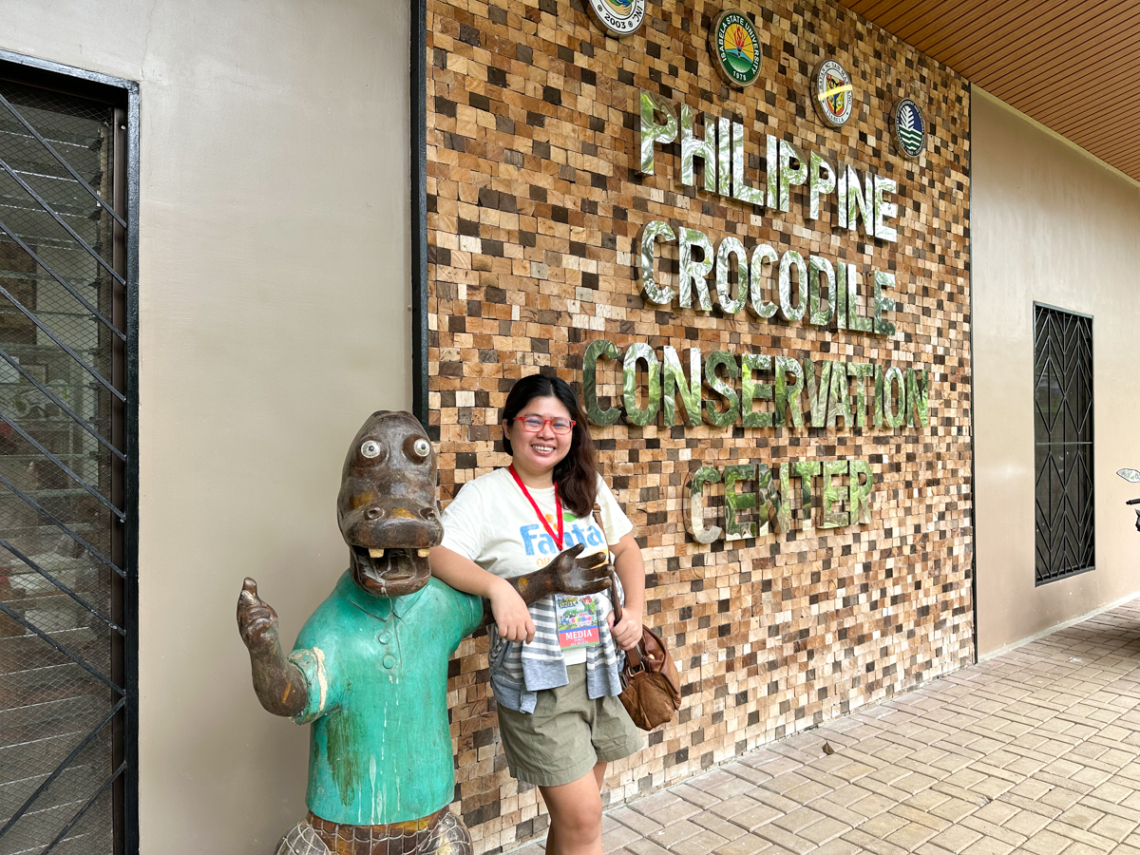
Philippine Crocodile Conservation Center: A Sanctuary for the Philippine Crocodile
What do you think about crocodiles? For many Filipinos, this animal has negative associations — especially because of the widespread story about “Lolong” and its use as a metaphor for corrupt politicians.
But crocodiles — like other animals in the wildlife — are important for the ecosystem. And the Philippine crocodile in particular is in danger of extinction. As such, the Philippine Crocodile Conservation Center in Isabela Province seeks to protect the Philippine crocodile thru the help of local communities.
Contents
About the Philippine Crocodile
There are 2 types of crocodiles in the Philippines: the saltwater crocodile (scientific name: Crocodylus porosus), which includes Lolong, and the freshwater crocodile (Crocodylus mindorensis, or “Philippine crocodile,” also referred to as “bukarot” by the Ilocanos, Yogad, and Ibanag), an endemic species found only in the Philippines.
The Philippine crocodile is smaller, with a maximum length of about 3 meters. They do not eat people, but rather various livestock, rats, and snail; they also prey on old and sick fish in the wetlands.
In the past, there was a healthy population of Philippine crocodile in the country. In fact, the barangay of Buwayang Bato in Mandaluyong City is named after this species of crocodiles, which used to roam the Pasig River. Over the years, their population has dwindled to near extinction due to habitat loss, hunting, and killing out of fear.
Currently, there are less than 100 mature Philippine crocodiles in the wild, notably in the town of San Mariano, Isabela Province, and southwestern area of Mindanao.
With its small population, it is currently the rarest crocodile species in the world.
Our visit to the Philippine Crocodile Conservation Center
We visited the Philippine Crocodile Conservation Center as part of our tour of Isabela’s tourist spots during the 2024 Bambanti Festival.
The Philippine Crocodile Conservation Center (PCCC) is located inside the Isabela State University in San Mariano. Established in 2022, PCCC seeks to protect and rehabilitate the population of the Philippine crocodile. It is managed by Mabuwaya Foundation, a non-profit organization led by wildlife biologist Dr. Merlijn van Weerd.
If you’ve been following our blog, you’d know that I love learning about wildlife conservation efforts. So I was excited to see what the PCCC is about.
Once we arrived at the PCCC, Dr. van Weerd held a short talk introducing the Philippine crocodile and their work. One of the interesting tidbits I’d gathered is that there are two indigenous groups in the country who believe in living in harmony with the Philippine crocodile. They believe that these freshwater crocodiles are protectors of forest spirits and/or they are their ancestors.
After the talk, we proceeded to the holding pen where young and adult Philippine crocodiles are kept. Currently, there are three adult freshwater crocodiles in the pen and several young ones.
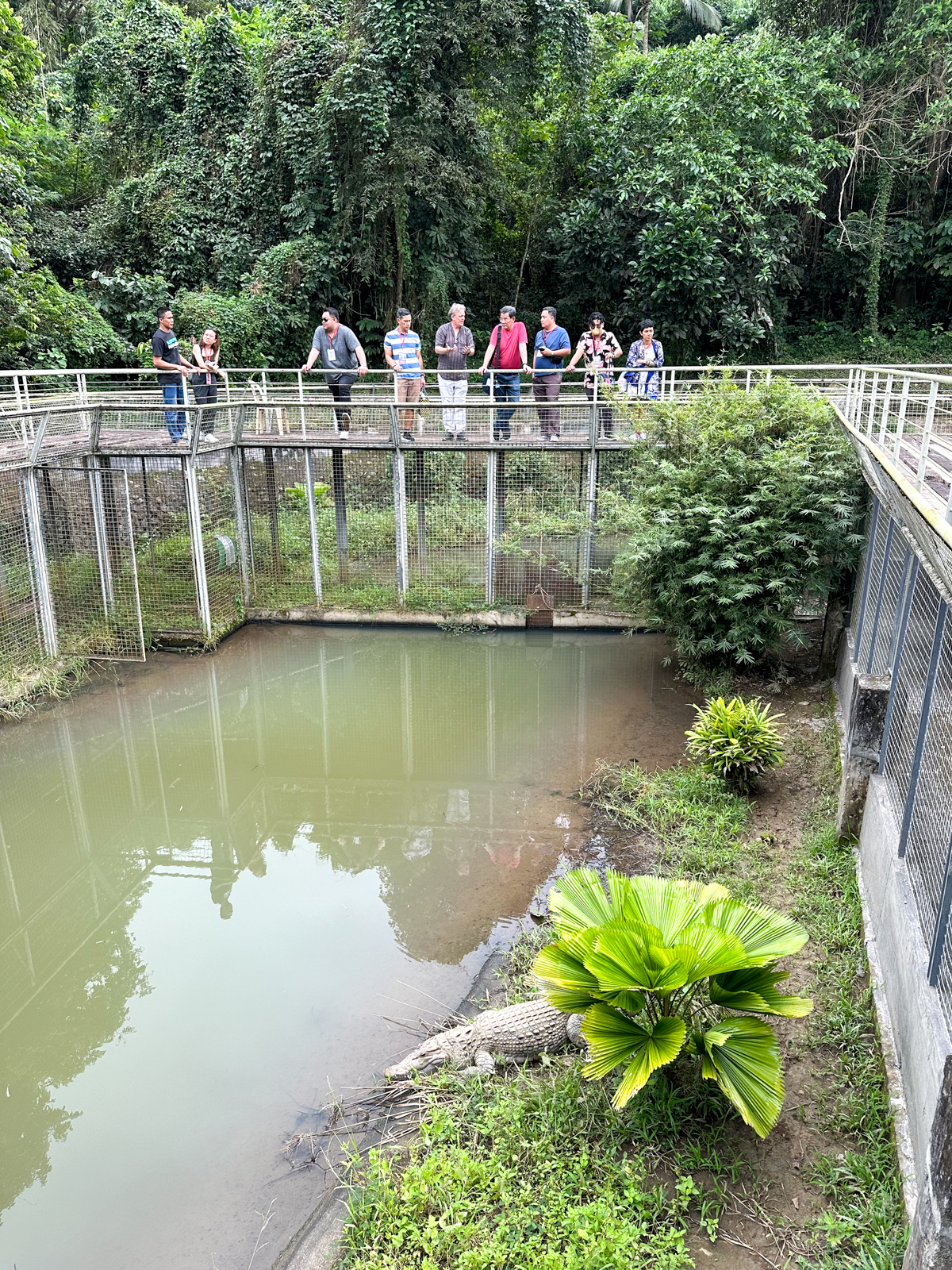
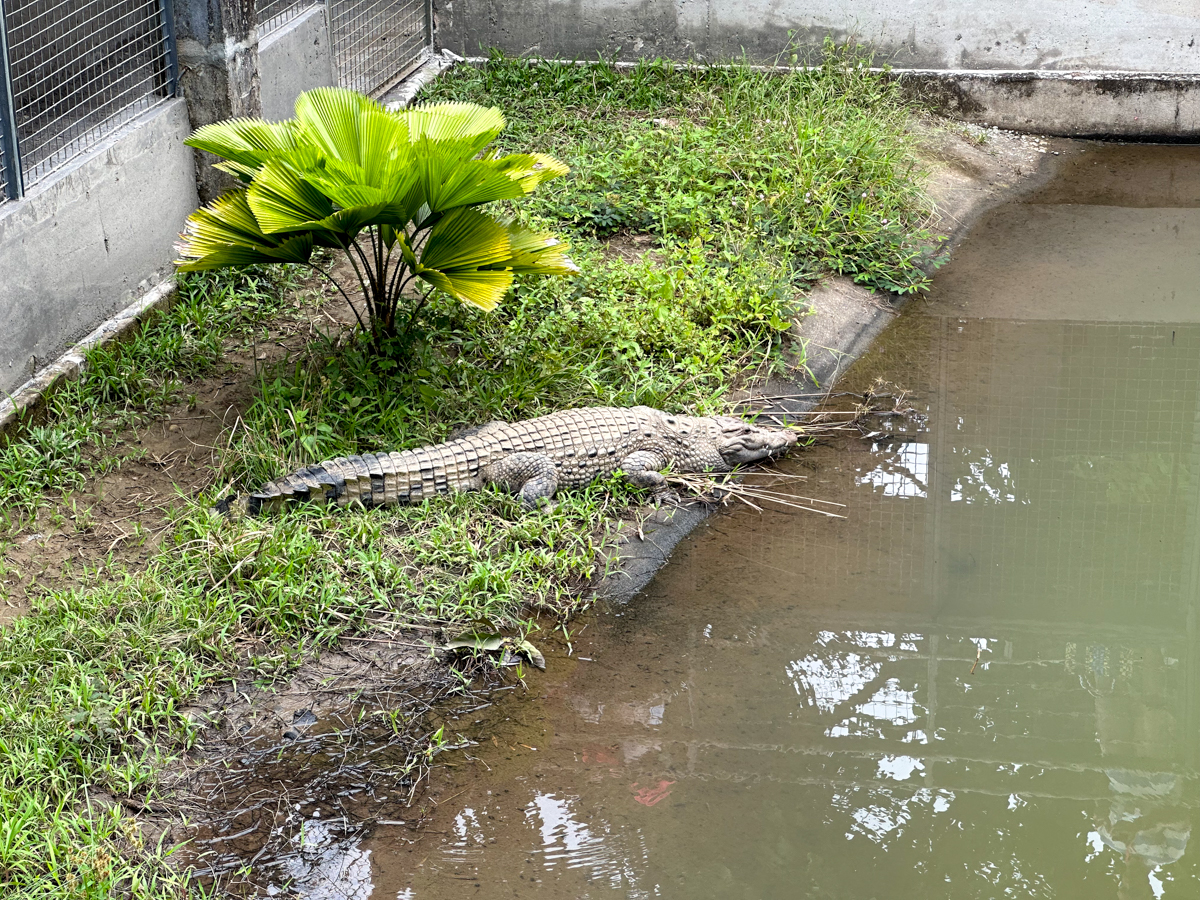
PCCC helps in establishing crocodile sanctuaries (or “locally conserved areas”) in San Mariano. Part of their work also includes looking for nests in the wild and rearing baby crocodiles and then releasing them back to the wild after 2 years, thereby increasing their chance of survival from 5% to 75-80%.
Along with other wildlife, the Philippine crocodile is protected under Republic Act 9147 (also known as the Wildlife Resources Conservation and Protection Act of 2001), with severe fines to those who will harm the crocodiles. However, it was noted that enactment of the law was weak. This is why part of the work that PCCC does is public awareness programs, especially among the locals in San Mariano — and visitors like us!
Dr. van Weerd also showed us baby crocodiles and even allowed us to hold it. Their snouts are secured to prevent them from biting. And yes they are very cute!
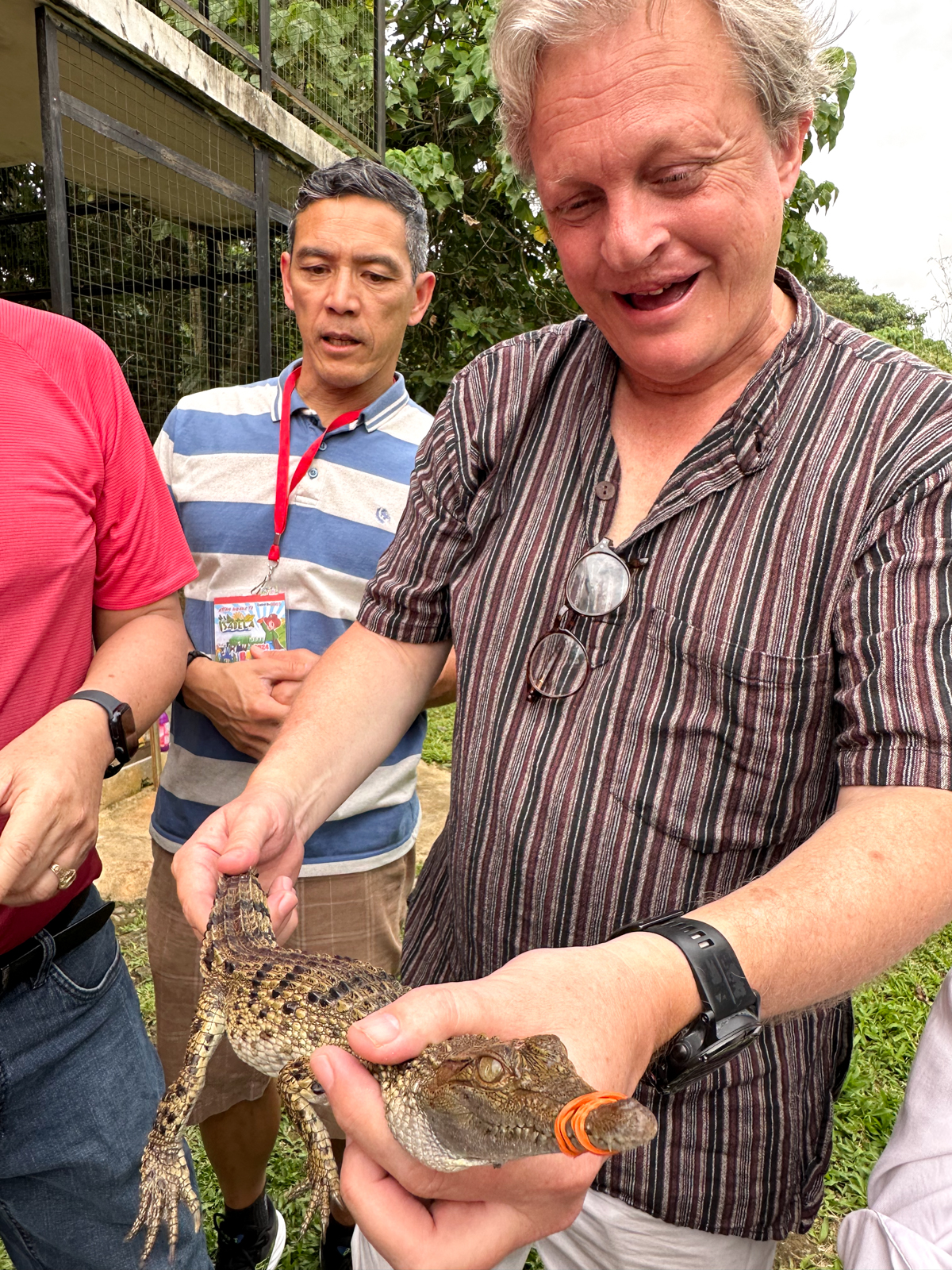
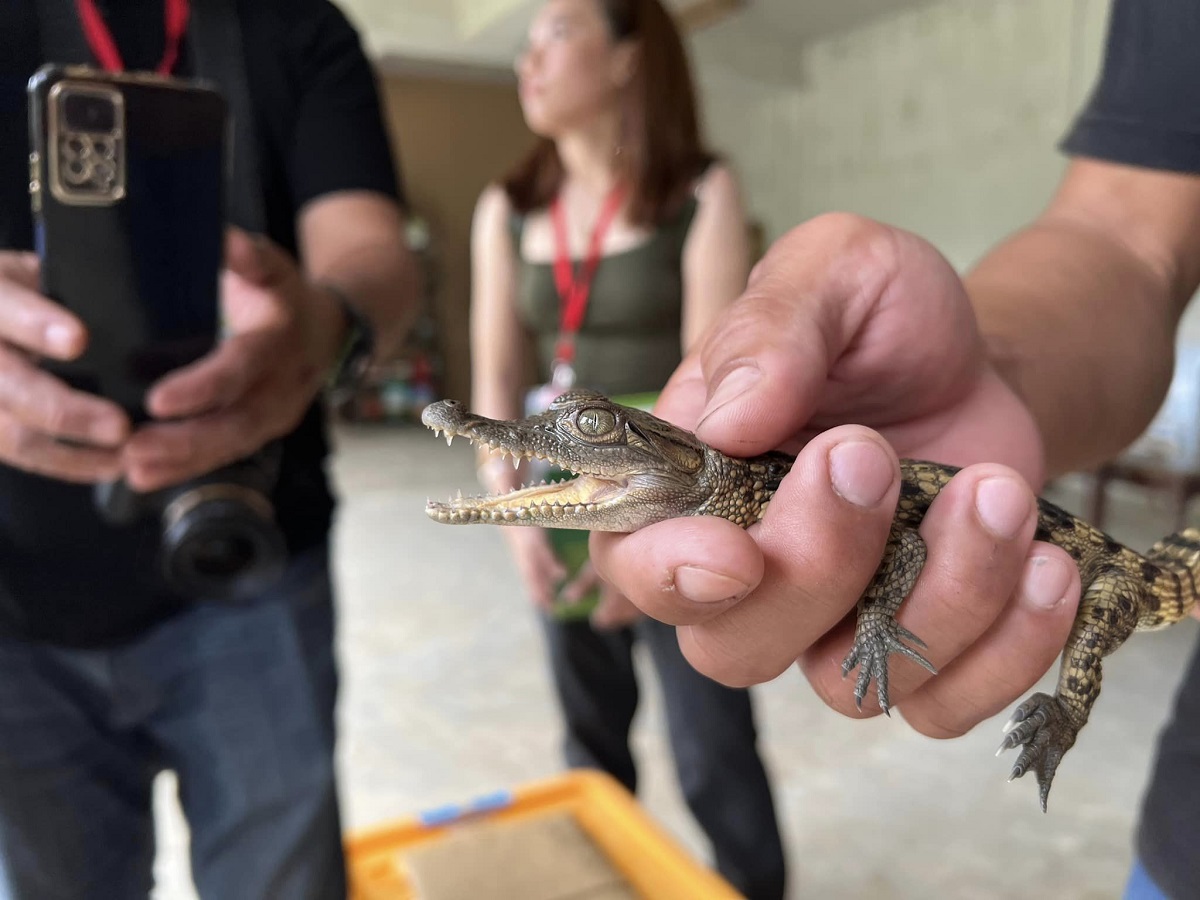
I was very glad to visit the PCCC and learn about the efforts to protect endangered species in the country. I believe that part of our responsibility as travel bloggers is also educating our readers about the wildlife and what we can do about it.
Like the Philippine eagle, tarsier, and other endemic species, the Philippine crocodile also deserves to be protected and to thrive in natural habitats.
If you’re a researcher, a wildlife enthusiast, or even a leisure traveler who wants to visit the best attractions in Isabela, then the Philippine Crocodile Conservation Center is a great place for you!
Practical info: Philippine Crocodile Conservation Center
How to get here
The Philippine Crocodile Conservation Center is located inside the Isabela State University. From the entrance, walk for about 15 minutes to the center or pay a tricycle to take you there.
Things to do at PCCC
Here are the things you can do at the center!
- Join an education talk to learn about the Philippine crocodile
- Get up close and personal with the baby crocs!
- Find out more about the people, lifestyle and culture, and various flora and fauna found within the Northern Sierra Madre Natural Park
- Take home storybooks and other reading materials and share this knowledge among your family and friends!
Contact
For inquiries and more, you can contact Mabuwaya Foundation in their official website or Facebook.
Do you have anything more to share about the Philippine Crocodile Conservation Center in Isabela? Let us know in the comments section below!
What to read next:
Planning a trip to Isabela Province? Here are our guides on Isabela:
- Best Tourist Spots in Isabela
- Best Tourist Spots in Palanan, Isabela
- Blue Lagoon
- Dibulo Falls
- Philippine Crocodile Conservation Center
Love backpacking?

Katherine Cortes is a long-time backpacker and a freelance writer/editor. She likes beaches, snorkeling trips, and relaxing staycations (preferably with bath tubs!).


